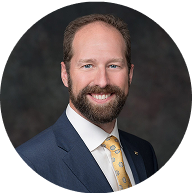FERS Federal Fact Check!
We love answering questions from Federal Employees about their benefits. Our passion for financial planning with Federal Employees has provided us with a unique insight into questions that are often times top of mind for Federal Employees.
When Federal Employees ask us questions we take note of them. Often, we find that when one Federal Employee asks us a question there are so many others who want to know the answer too.
At FERS Federal Fact Check, we dedicate this section to answering some of the most common questions that Federal Employees have about their benefits.
Here is what we recently received,
“Should I use my TSP to pay off my mortgage before I retire?”
Every couple of weeks a Federal Employee asks us if they should make a distribution from their Thrift Savings Plan (TSP) to pay off their mortgage.
On the surface, it seems logical.
You have a significant debt you are paying interest on. You have accumulated a large enough investment to pay the debt off.
When do most FERS Employees ask us this question? Just as they are getting ready to retire.
The idea of no longer having a mortgage payment allows many retirees to feel less stressed about the amount of money they will need on a monthly basis in retirement.
Here is the formula most use to make this determination:
$300,000 TSP Balance
-$300,000 Mortgage
$0.00 Balance
Here is why this math may possibly be a bad financial decision.
Making room for Aunt IRS
As a Federal Employee, your TSP (for the most part) is tax-deferred.
That means, the monies accumulated in this investment have not yet been taxed.
When you made a contribution (put funds in), to your Traditional TSP, you did so on a pre-tax basis. This is often done so that you have less taxable income during your working years.
Here is a simplified example of what that could look like:
Example: $100,000 base salary.
– 18,000 Employee Contributions to a Traditional TSP
= $82,000 Taxable income on your W-2
As those funds within the account grew, they did so on a tax-deferred basis.
[Roth TSP contributions are different as they are taxed when you make the contribution (so no tax deduction) however the growth of the Roth TSP investments grows tax-free if you meet certain rules.]
Look around the dinner table tonight and see if you set a place for your beloved Aunt IRS (Internal Revenue Service).
You may not have thought about her yet, but we promise you, when you pull those funds out of the Traditional TSP she is going to want a seat at the table.
The US uses what you can call a “progressive” tax system; the more money that you earn, the more you pay in taxes.
When you make a distribution (take money out) of your TSP, your taxable income was just increased by the amount that you withdrew from your Traditional TSP.
Making a large distribution like this could quickly escalate the tax bracket that you are in.

All great information but how does it work? Well, let’s walk through an example.
We began talking about paying off a mortgage of $300,000 which is what we will continue with here in this example so that we can see how one such example might work.
Let’s say that you are a Married Filing Joint couple who has a gross income of $150,000.00.
We will keep this simple and say that under the Tax Cuts and Job Act (TCJA) that you have a standard deduction of $30,000.00. This brings the taxable income to $120,000.
($150,000 – $30,000 = $120,000)
Based on the above, the marginal tax bracket is 22%. (https://apps.irs.gov/app/withholdingcalculator/index5.jsp)
But remember, we just made a $300,000 distribution from the Traditional TSP (which is taxable) to pay off your home.
The $300,000 has to be added to your income for the year! But it gets even stickier…
Here is where most people get into a sticky situation. When you make a distribution from your TSP, Aunt IRS slides on over and takes her 20% at that very moment (The TSP is required to withhold 20% as a tax ‘estimate’ when you take a withdraw from the TPS in most cases).
That means that you withdrew $300,000, but $60,000.00 was withheld automatically for taxes.
That is not even the sticky part…
20% was an estimate. The TSP office does not know or review your personal tax return so they estimate 20% (because that is what is required of them) but that may not be what you actually owe, it could be more.
Let’s work this out: you have $150,000 of joint income and now you have an additional $300,000 on top of that for a combined income of $450,000.00. In this scenario, you receive the standard deduction under the TCJA of $30,000. Your taxable income is now $420,000.
($150,000 + $300,000 – $30,000 = $420,000)
What tax bracket under our progressive tax system are you now in? Where you may have been in a 22% tax bracket you are now in a 32% tax bracket with the addition of the TSP distribution.
Where you owed $16,506 in federal income taxes (before you took out the TSP funds), you now owe $89,772 in federal income taxes. This example shows you owe almost $73,266 of additional taxes (89,772 – 16,506 = 73,266).
You made a $300,000 withdrawal from the Traditional TSP to pay off your home but you netted around $226,734 ($300,000 – $73,266 = $226,734).
If your goal had been to pay off your home with $300,000, then you really needed to withdraw closer to $410,000 from your Traditional TSP.
($410,000 + 150,000 = 560,000)
(560,000 – 30,000 = 530,000 taxable income)
$530,000 taxable income is approximately $126,248 in total federal income taxes owed. $126,248 in total taxes minus the $16,506 in taxes that you would have had with $150,000 of income equals $109,742 of additional taxes due to the TSP distribution.
$410,000 (TSP distribution) – $109,742 (taxes on TSP distribution) = $300,258
(Net from TSP
W. O. W.
You started off wanting to retire your mortgage payment and spent $109,742 to do so.
Percentages
Mortgage interest rates have been on the rise since 2022 after a period of historical lows. It is anticipated that rates might come down as the Feds started cutting interest rates in 2024, but no one knows exactly how much or how long it will take for rates to adjust back down.
Some people were able to lock in or refinance their homes when interest rates were below 3%, but now rates have come up to the 6% – 8% range.
It might be tempting to see a mortgage rate that is 7% and think that you might need to pay this down faster so that you don’t pay so much in interest over the life of the loan.
One question to ask yourself is whether you think rates will come back down again in the future. If yes, then it might be a good idea to “stay the course” and consider refinancing when rates come down. You might also consider making extra principal payments on your loan as well.
Consider reassessing whether a significant withdrawal from your TSP is financially wise for you, taking into account potential consequences such as taxes that may render it less favorable.
All investments are exposed to risk so it is important, particularly as you move into retirement, that you and your financial planner assess what makes the most long-term planning sense for you and your family.
When we sit down with our Federal Employee clients, we look at two sides of the coin: money and emotion.
You need to work with your financial planner to do the same.
Look at all the variables and see which solution makes the most financial sense for you. When you do so, try to extract your feelings about having a mortgage in retirement from the question. If you are having difficulty making a non-emotional decision, consult with your Financial Planner so they can provide objective, dispassionate insight.
If you are absolutely committed to paying off your mortgage then consider doing it over a period of time rather than making one lump sum payment. Retiring the debt does not have to be done in one year. Think about staging larger payments to retire the debt over a period of time vs., all at once. Assess your income tax brackets and make good, long-term planning decisions.
If you find yourself saying, “But when I retire I am going to be in a lower tax bracket so this does not apply,” I want to stop you there. Right thought in theory but in reality, is it going to work that way?
You may retire and your income is decreasing but for most federal employees, your sources of income are all tax deferred.
Understanding, as a federal employee, how critical financial planning and tax planning are when you go to retire is imperative to your success.
Take your time and don’t allow yourself to make emotional decisions without first running through the complete scenario. Go through our 7 Retirement Mistakes so that you know what to avoid in the future.

ABOUT THE AUTHOR
Micah Shilanski, CFP®, is a distinguished financial planner known for his deep commitment to providing exceptional advisory services to his clients. As the founder of Plan Your Federal Retirement, Micah has dedicated his career to helping federal employees understand and optimize their benefits to ensure a secure and prosperous retirement. His expertise is widely recognized in the industry, making him a sought-after speaker and educator on financial planning and retirement strategies.
Micah’s approach is client-centered, focusing on creating personalized strategies that address each individual’s unique needs. His work emphasizes the importance of comprehensive planning, incorporating aspects of tax strategy, investment management, and risk assessment to guide clients toward achieving their financial goals.


